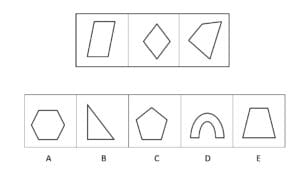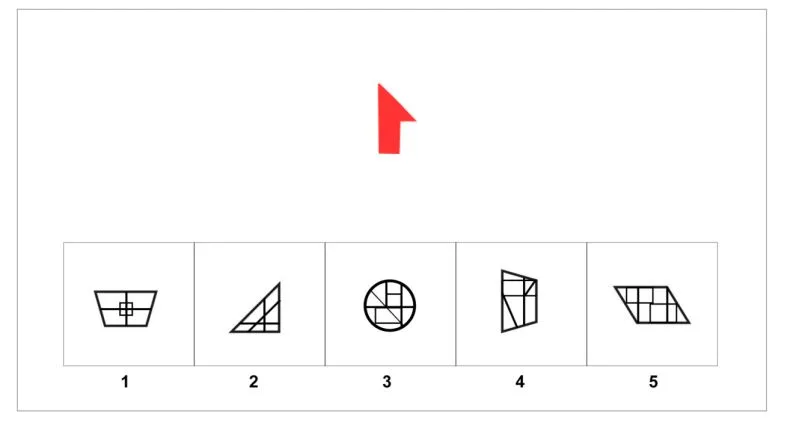CAT4 Test 2026: What It Is, Question Types, Scoring & Free Practice
The CAT4 (Cognitive Abilities Test, Fourth Edition) is one of the most widely used assessments in schools. It helps teachers understand a child’s reasoning across verbal, non-verbal, quantitative, and spatial skills. This guide explains in plain language what the test involves, why schools use it, and how you as a parent can prepare your child with confidence.
As you read on, you’ll also find a free downloadable CAT4 practice PDF with sample questions — perfect for getting familiar with the test format.
What is the Purpose of the CAT4 Test?
- Identify Strengths & Weaknesses – Helps pinpoint areas where students excel or need support.
- Inform Teaching Strategies – Allows for personalised learning plans tailored to individual needs.
- Predict Academic Potential – Offers insight into future performance and growth trajectories.
- Benchmark Nationally – Compares students’ abilities against national averages effectively.
Cognitive Abilities Test (CAT4) is one of the most widely used assessments for students aged 6–17. It evaluates potential — not just learned knowledge.
Schools use CAT4 to evaluate reasoning skills in language, numbers, and spatial thinking, helping tailor instruction to each student’s strengths.
GL Assessment is the official provider of the CAT4 Test worldwide.
Types of Questions in the CAT4 Test
🗣️ Verbal Reasoning
Tests understanding of words and language. Students solve questions on word meanings, verbal analogies, and classifications to measure verbal intelligence.
📘 Explore the Full Verbal Reasoning Guide🔢 Quantitative Reasoning
Measures numerical reasoning through number analogies and number series, challenging students to recognize patterns and relationships between numbers.
📘 See the Full Quantitative Reasoning Guide🧩 Non-Verbal Reasoning
Involves figure classification and figure matrices. Students identify shapes, patterns, and logical rules to test abstract reasoning skills.
📐 Spatial Ability
Tests figure analysis and figure recognition. Students manipulate shapes mentally, identify rotations, and analyze paper-folding tasks to measure spatial visualization.
CAT4 Format Times and Sections Explained
The CAT4 is made up of four batteries. Each battery contains two short subtests designed to assess a specific skill.
Typical timing is 8–10 minutes per subtest. The whole test takes around ~72 minutes (not including breaks). Timing can vary slightly by level.
| Battery | Subtest | Time | Number of Questions | Avg. Time / Question |
|---|---|---|---|---|
| Verbal | Verbal Classification | 8 minutes | 24 | 20 seconds |
| Verbal | Verbal Analogies | 8 minutes | 24 | 20 seconds |
| Non-Verbal | Figure Classification | 10 minutes | 24 | 25 seconds |
| Non-Verbal | Figure Matrices | 10 minutes | 24 | 25 seconds |
| Quantitative | Number Analogies | 10 minutes | 18 | 33.3 seconds |
| Quantitative | Number Series | 8 minutes | 18 | 26.6 seconds |
| Spatial | Figure Analysis | 9 minutes | 18 | 30 seconds |
| Spatial | Figure Recognition | 9 minutes | 18 | 30 seconds |
Note: Timings and question counts may vary slightly by CAT4 level.
CAT4 Levels Explained by Age and School Year
Not sure which CAT4 level is right for your child? Each level maps to a typical age range and school year. Use the cards below to find the correct level.
Level X
Level Y
Level A
Level B
Level C
Level D
Level E
Level F
Level G
Preparing for the CAT4 Test
How is the CAT4 Test Administered?
- The CAT4 test is typically conducted at school by a trained administrator.
- It is usually taken on a computer, though a paper-based version still exists (but is less common).
- Total test duration: 2 hours and 15 minutes, divided into multiple sections.
- Flexible scheduling: Schools can administer the test at any point in the academic year.
Is the CAT4 Test Hard?

- Focuses on Thinking Skills The test evaluates reasoning instead of learned content, so understanding question types matters.
- Varies by Student Difficulty depends on the child’s natural cognitive profile and familiarity with test formats.
- Preparation Makes a Difference Practising similar questions builds confidence and helps manage timing effectively.
- Challenges Problem-Solving Most students find it manageable with the right strategies and mindset.
Sample Questions & Explanations
Explore free CAT4 sample questions from each test battery, with clear, child-friendly step-by-step explanations.
Verbal Reasoning
Courageous | Brave | Valiant — choose the word that fits the same idea.
Question:
Choose one:
Show step-by-step reasoning (tap to open)
All three words mean “not afraid”.
Cross out timid, cowardly, hesitant — these mean “not brave”.
Between the two, bold is the clearest match for “brave”.
Non-Verbal Reasoning — Figure Classification
Pick the option that shares the same defining feature.
Question:

Show explanation
Each test shape has 4 sides.
Keep only the option with exactly 4 sides.
E — it has 4 sides like the test shapes.
Quantitative Reasoning — Number Analogies
[72 → 18] [48 → 12] [60 → ?]
Pairs:
Choose one:
Show step-by-step reasoning (tap to open)
Try dividing by 4 on the known pairs.
60 ÷ 4 = 15.
The rule works for all given pairs, so it’s safe to use.
Spatial Ability — Figure Recognition
Find the option that matches the composite target.
Question:

Show explanation
It’s a rectangle with a right-angle triangle joined to one side.
Look for the same two parts, joined the same way.
2 — it shows the triangle properly joined to the rectangle.
Discover full CAT4 practice for every level – from beginner to advanced. Access simulations, tips, and expert-created questions.
Strategies & Tips for Taking the CAT4 Test
Want to ace the CAT4 test like a pro?
Follow these golden strategies to boost your confidence and performance!
Understand the Test Format
Familiarize yourself with the types of questions, number of questions, and time limits for each section.
Practice, Practice, Practice
The more you take practice tests, the more comfortable you’ll feel with the format.
Master Time Management
Keep an eye on the clock to ensure you can answer all questions within the given time.
Read Instructions Carefully
Misreading instructions can cost you valuable points—double-check before answering!
Use the Process of Elimination
Not sure about a question? Eliminate wrong answers first, then make an educated guess.
Take Care of Yourself
Get enough sleep, eat a healthy breakfast, and arrive on time to stay sharp.
Manage Test Anxiety
Feeling nervous? Take a deep breath and remind yourself—you’ve got this!
Check Before Submitting
Review your answers and don’t leave any questions blank before submitting.
Study the Test Structure
Improve your prep by reviewing infographics and section breakdowns to understand the test better.
CAT4 Practice Test Video
CAT4 Test Day Tips

Stay Confident
Maintain calm and focus to perform your best.
Arrive Prepared
Be well-rested and arrive early to settle in calmly.
Follow Instructions
Listen carefully and adhere strictly to test guidelines.
Time Management
Keep track of time and pace yourself across sections.
Frequently Asked Questions
What is the CAT4 Test?
How is the CAT4 Test scored?
How can I help my child prepare for the CAT4?
Understanding and Interpreting CAT4 Test Results
National Percentile Rank (NPR)
Shows how a student’s performance compares to peers nationwide.
Standard Age Score (SAS)
Compares scores accounting for age differences, useful for tracking development.
Stanine Scores
A 1-9 scale illustrating performance level, with 9 being highest.
Profile Benefits
Helps parents and teachers identify strengths and areas needing support for tailored teaching.
CAT4 Test Scores Explained
Have you checked out the CAT4 reports yet?
As parents, we all want to make sure we’re doing everything we can to help our kids succeed, and these reports are an excellent tool for identifying strengths and challenges in our children.
Trust me; you want to take advantage of this valuable resource!
It’s easy to overlook areas where our kids may need extra help or be challenged further. But by diving into the report, we can identify these areas and help our kids reach their full potential.
The best part is these reports are easy to understand. If you haven’t already, ask your child’s teacher for the results report and work together on your child’s strengths and weaknesses.
Remember that average scores don’t always mean average abilities across the board.
Let’s give our kids the best chance for success!
How to Interpret the CAT4 Results:
The best thing about the test is receiving a detailed report! Let’s explore together how to interrupt the CAT4 Results.
The individual report for parents includes a complete test review, a student profile, and a summary.
The student profile will include a bar chart report:

The yellow part is the average.
The summary will look as follows:

The summary will include all insights about the pupil.
National Percentile Rank (NPR):
The National Percentile Rank (NPR) shows how a student’s standardized assessment score compares to other students in their grades nationwide.
For instance, if a student has an NPR score of 80%, they did better than 80% of their classmates and worse than only 20%.
Standard Age Scores (SAS):
SAS scores compare a student’s performance to an average of 100 with a standard deviation of 2.
It’s not a pass or fail threshold, but it’s crucial for understanding a student’s educational path.
When comparing standard age scores (SAS) between CAT4 Level X & Y and the other levels of CAT4, it is important to note that whereas the range of scores from levels A to G is from 59 to 141, the range of scores for levels X & Y ranges from 69 to 131, making it tailored to a specific age group.
This is to ensure that younger children in the year group are not disadvantaged when taking the online assessment, as the SAS takes into account the child’s age in years and months at the time of testing and is calculated from their raw score.
Additionally, most selective schools are looking for a standardised score of at least 115, and sometimes higher, for Year 7 candidates with low quantitative scores and low verbal scores.
This information can be useful for parents to understand their child’s performance on the CAT 4 test and how it may impact their future academic opportunities, including their stanine rank.
Spatial reasoning, a crucial aspect of a rounded profile of student ability, is also measured in the CAT4 test, providing insight into a child’s ability to understand and manipulate visual information.
CAT4 provides a rounded profile of student ability, including spatial reasoning, so parents can better understand their child’s strengths and weaknesses and make informed decisions about providing the right level of challenge for their academic progress.
Stanines (ST):
The scale ranges from 1 to 9, with 9 being the highest.
Using Stanines, you can gain valuable insights into students’ performance and help them reach their full potential.
You can read more on our CAT4 Results report.
CAT4 Test Results
| Percentile Rank | STEN | Standard Age Score | Interpretation |
|---|---|---|---|
| 98+ | 10 | 130+ | Very High Performance |
| 84 – 97 | 8 – 9 | 115 – 129 | Above Average Performance |
| 70 – 83 | 7 | 108 – 114 | High Average Performance |
| 31 – 69 | 5 – 6 | 93 – 107 | Average Performance |
| 16 – 30 | 4 | 85 – 92 | Low Average Performance |
| 3 – 15 | 2 – 3 | 70 – 84 | Below Average Performance |
| <3 | 1 | >70 | Very Low Performance |
CAT4 in the UAE: Usage and Educational Impact
Collaborative Approach
Scores shared with educators and parents to create a supportive learning environment tailored to the student.
Admissions and Streaming
Many schools use CAT4 scores as part of admission or streaming decisions to match students to appropriate learning levels.
Supports Multiple Curricula
Used by British, American, and international curriculum schools for placement and academic planning.
Inclusivity in Education
CAT4 supports diverse learners from varied cultural and linguistic backgrounds in UAE schools.
Administration in UAE Schools
- Typically conducted annually or during specific admission cycles.
- Results are shared with teachers, school administrators, and sometimes parents to ensure a collaborative approach to student development.
The CAT4 exam plays a critical role in the UAE education system by equipping educators and parents with the tools to foster students’ intellectual growth and maximize their potential.
Discover full CAT4 practice for every level – from beginner to advanced. Access simulations, tips, and expert-created questions.
Final Thoughts: Encouraging Success on the CAT4 Test
Helping your child prepare for the CAT4 test means more than just practicing questions—it’s about understanding their unique strengths and challenges. Encourage open communication, celebrate progress, and watch for signs of frustration or anxiety. Regular check-ins can make a big difference in building confidence and reducing stress.
Remember, CAT4 measures thinking and problem-solving skills, not knowledge memorization. With supportive preparation and a positive mindset, every child can approach the test ready to showcase their true potential.
From a personal point of view, as parents, you should encourage your child to do his best, but remember that some children might need extra help from you or the school.
Therefore, do your best to help them prepare and do a regular check-up on their CAT4 practice test scores. If you find them “confused or frustrated”, speak with them about what is causing them to feel that way.
From my experience, pupils with anxieties and other learning disabilities might feel ashamed and will mostly keep that secret.
The best note I want you to take from this article is that your job as a parent is to help them speak about their problems.
FAQs
CAT4 Test – Frequently Asked Questions
What is the CAT4 test?
The CAT4 test (Cognitive Abilities Test) is a standardised assessment created by GL Assessment to measure how students think, rather than what they have been taught. It focuses on reasoning skills across four areas – verbal, quantitative, non-verbal, and spatial – to give schools a clearer picture of a student’s learning profile and future academic potential.
What skills does the CAT4 test measure?
CAT4 measures four main types of reasoning:
- Verbal reasoning – thinking with words and language.
- Quantitative reasoning – working with numbers and numerical patterns.
- Non-verbal reasoning – solving problems using shapes, patterns, and abstract visual information.
- Spatial reasoning – imagining and manipulating shapes in space, important for many STEM subjects.
Together, these areas help schools understand how a student processes information and where they may need support or extra challenge.
Who takes the CAT4 test and at what ages?
CAT4 is typically used with students aged around 6 to 17+. Schools usually administer it from the early primary years up to secondary school. The test is divided into levels (X, Y, A–G), and each level is matched to a specific year group and age range so that scores can be fairly compared with national norms for that age.
How is the CAT4 test structured and how long does it take?
CAT4 is a multiple-choice test delivered either online or on paper. For most levels (A–G), it is organised into three main parts, each made up of short, timed subtests that cover the four reasoning batteries. In total, the assessment usually takes around two to a little over two hours, including instructions and short breaks, although the exact timing can vary slightly by level.
How is the CAT4 test scored?
CAT4 results are reported using several standardised scores:
- Standard Age Scores (SAS) – compare a student’s performance to others of the same age, with an average score of 100.
- National Percentile Rank (NPR) – shows the percentage of students in the same age group who scored below that student.
- Stanines (ST) – group scores into nine broad bands from 1 (very low) to 9 (very high).
Scores are usually given for each battery as well as an overall profile, helping teachers see both strengths and areas that may need support.
What is considered a good CAT4 score?
In CAT4, a Standard Age Score of around 100 is considered average for a student’s age. Scores in the 89–111 range are broadly average, 112–126 are above average, and scores 127 and above indicate a very high level of reasoning for that age. On the stanine scale, stanines 4–6 are average, while 7–9 are above average. However, “good” always depends on context, the school, and the individual student’s learning history.
Is the CAT4 test an IQ test?
CAT4 is not marketed as a traditional IQ test. It does measure underlying reasoning abilities that are related to intelligence, but its main purpose is educational: to help schools understand how a student learns best and where they may need support or extension. CAT4 results should always be interpreted alongside classroom performance, teacher observations, and other assessments, rather than used as a single label for a child’s ability.
Can students prepare for the CAT4 test?
GL Assessment emphasises that CAT4 is designed to measure underlying reasoning rather than taught curriculum knowledge, and they do not formally endorse practice materials. At the same time, many parents and schools find that gentle preparation – becoming familiar with question styles, practising similar puzzles, and working on timing – can reduce anxiety and help students show their true ability under timed conditions.
The most helpful preparation focuses on understanding question types and building confidence, not on memorising specific questions.
How do schools use CAT4 test results?
Schools use CAT4 profiles to inform a wide range of decisions. Results can support setting and streaming, help identify students who may benefit from extra support or enrichment, and guide curriculum planning in subjects like maths, science, and languages.
In some schools, CAT4 also feeds into decisions about admissions, scholarships, or selection for gifted and talented programmes, but it should always be considered alongside other evidence.